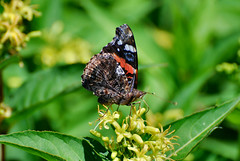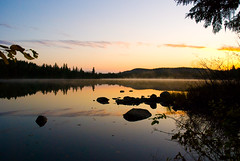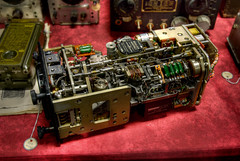|
|
||||||||||
|
|
||||||||||

|
Depth of field is a measurement of how much of the scene you are photographing is in focus. In this tutorial we will examine what affects depth of field and how to control it. The optics in a camera is limited to only being able to focus a given distance from the camera at a time. Imagine standing facing an invisible wall that extends to the left and right as far as you can see and as high as you can see. That invisible wall is referred to as the focal plane. If you focus the camera on a picture hanging on that invisible wall, anything else hanging on that invisible wall will be in focus. If a person is standing in front of that wall and started walking towards you, they would start to go out of focus. If another person is standing behind the wall and started walking away from you, they would also start to go out of focus. The reason this is happening is the lens has the ability to focus somewhat on objects to the front and rear of the invisible wall. This area where objects remain in focus is referred to as the depth of field. As an experiment tell the front person to start walking from the wall toward you and tell them to stop as they start to go out of focus. Then tell the back person to start at the wall and walk away from you and stop as they start to go out of focus. Everything between the two people would be more in focus than everything in front of the front person and everything behind the back person. The depth of field starts at the closest person and ends at the furthest person. There are two major factors that affect the size of the area at which objects are in focus and out of focus. The first is the size of the aperture. The aperture controls the amount of light that enters the camera. With a larger opening more light enters the camera while a smaller opening lets less light into the camera. The size of the aperture has an opposite affect on depth of field. Remember that the numbering system for the aperture is opposite compared to the size of the aperture. Higher numbers represent a smaller opening and lower numbers represent a larger opening. An easy way to remember how aperture affects depth of field is to use the numbers. The higher number for the aperture means a deeper depth of field. A lower number for the aperture means a shallower depth of field. Start up the camera simulator and we will look at the effect of depth of field by controlling the aperture. With the aperture slider set at f/16 you can see that the people and the water in the background are in focus. Slowly slide the aperture slider to the left towards f/4. You will notice as the aperture number decreases, the size of the aperture gets larger, and the background becomes more and more out of focus. Notice the people in the picture stay in focus. This is because a larger aperture size creates a shallower depth of field. Return the slider back to f/16 and the deeper depth of field will return bringing the water back in focus. You may have also noticed that objects in focus seem to become more dominant when the depth of field is decreased.
The second major factor that affects depth of field is the distance the subject you focus on is away from the camera. Remember that invisible wall called the focal plane? The closer the camera gets to the focal plane, the distance you focused on, the shallower the depth of field gets. This can be helpful, or can get in the way. When taking landscape pictures, the object focused on is usually quite far away and easier to get everything in focus. When taking extreme close-up pictures like flowers, the depth of field can be less than 1 inch if you are using a large aperture opening, which is a small aperture number value. A zoom lens can cause the same thing to happen. By zooming in on a flower you are effectively doing the same thing as standing closer to the subject. Dealing with depth of field may require taking several pictures until you get what you want. Remember, by decreasing the size of the aperture to increase the depth of field may require the shutter to be open longer. In some cases you may want to use a tripod to hold the camera steady to avoid motion blurring. A smaller aperture is not always better. There is a point at which a very small aperture will actually cause the entire picture to loose sharpness. Be careful when using apertures over f/16. Experimentation and experience will be your best guide. That being said, there are some general rules of thumb for aperture and depth of field. If your camera has scene modes like sport, landscape, portrait, etc, try them out. They have been pre-programmed into the camera by the manufacturer as a good recommendation for that type of scene. If your camera displays the aperture value being used when you select a scene mode, take note of the value for future reference.
Now go out and have some fun with your camera. For more information, check out the following links. |




